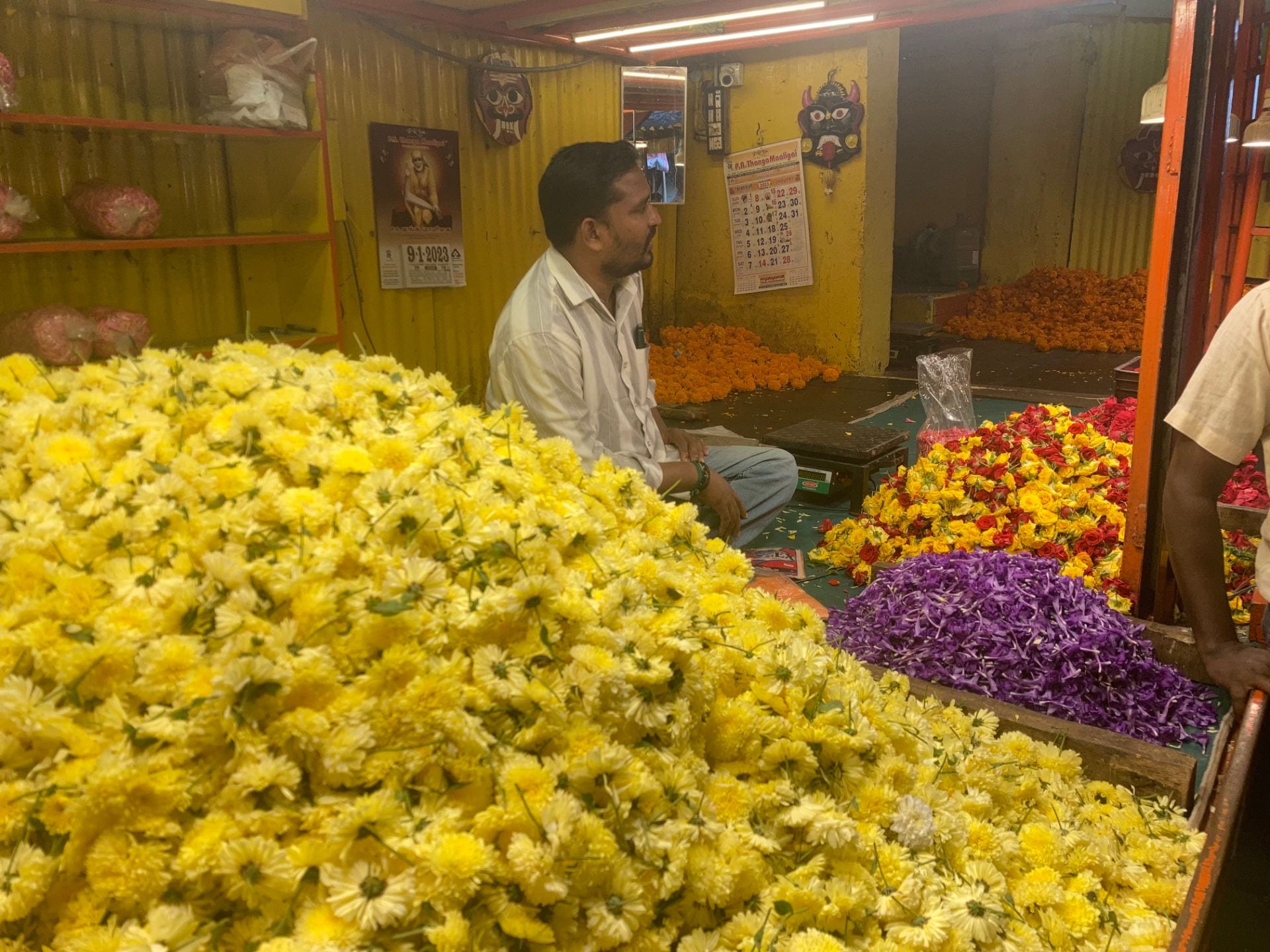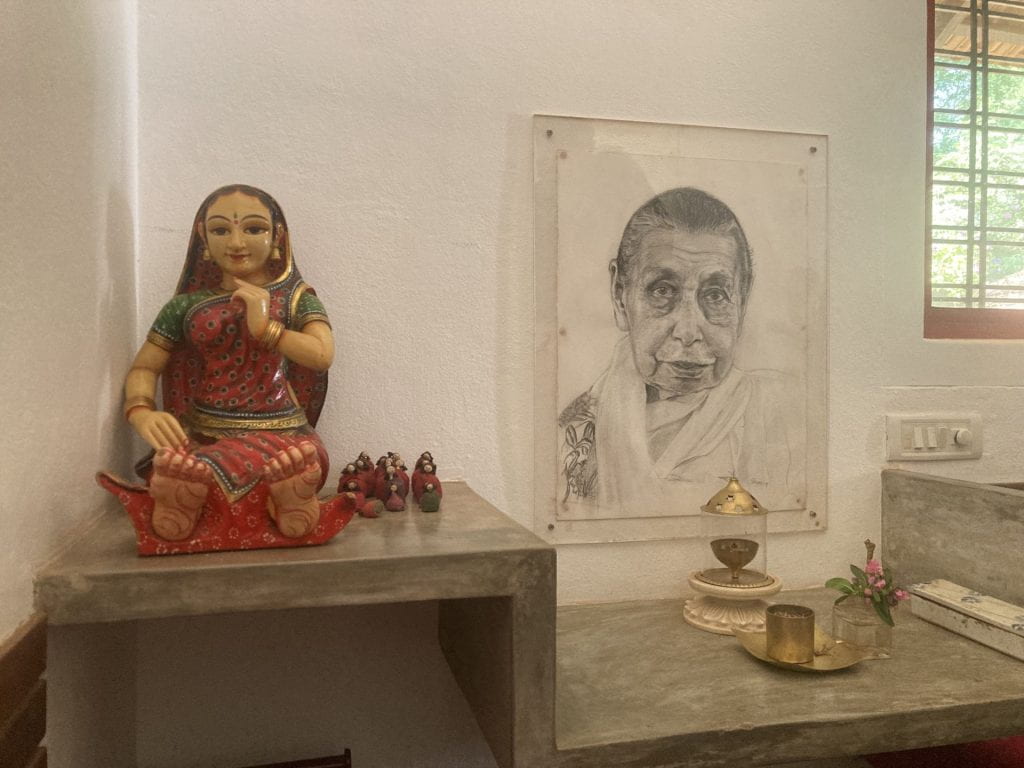We landed in Chennai after a couple days of flying, all tired but excited for the journey ahead (importantly, not a journey on a plane). We were greeted by a massive Indian flag in front of the airport, flapping lazily in the soupy warm South Indian air – it was our first proper look at India. It became very obvious over the following days how true the cliché of India being a “country of contrasts” was. As Nick (the coordinator of our study tour) said “whatever is true in India, the opposite is also true.” As much as this is the case with higher-level national statistics or social issues, the multitude of sensory contrasts we experienced in our short week also holds true to this. Even down to the smells we experienced walking down the street in Pondicherry (our first major stop on the tour after landing in Chennai): one moment may contain the warm smell of incense from the nearby temple, or of marigolds in the flower market. The next moment: the sharp stink of stagnant open drains or rotting rubbish.

This was apparent on our first day riding on the bus to Pondicherry – a kaleidoscope of life drifted by our bus window: temples, churches, mosques, political posters, flags, advertisements, shops, endless streams of motorbikes, autorickshaws and trucks, animals, cricket games, people sleeping, walking, talking, and eating. The sound of cars honking and general hubbub of people carrying out their daily activities was ever-present.
Nowhere was the bright and loud side of India more present than at the Manakula Vinayagar Ganesha Temple we visited in Pondicherry. Brightly painted Ganeshas adorned all the walls; the air was thick with incense and the sound of breaking coconuts, beating drums, and chanting. The golden Ganesha chariot being pushed around in procession shone brilliantly under electric lamps, powered conveniently by a generator dragged behind the chariot.


Despite all of this organised chaos and sensory overload, we have also experienced many moments of profound silence and serenity. In the Sri Aurobindo Ashram, a community for the followers of the spiritual and independence leader Sri Aurobindo and his successor and collaborator “The Mother,” the commotion of the streets was scarcely audible in the complete silence required in the Ashram. In the experimental international community founded by The Mother, Auroville, we visited the Matrimandir or “Mother Temple.” It was an imposing structure, an immense shining gold sphere sat atop geometrically precise “petals,” (in complete contrast to the old and greatly varying colonial French homes we were used to seeing in Pondicherry). Inside (and out, for that matter), the winding ramps and central sunlight beam made it look like it had been taken straight out of a 1970s sci-fi/dystopia movie. Inside the main meditation chamber, a crystal ball sat in the centre of a completely white room. Once we were seated, the silence set in, a viscous and consuming silence that I think few of us have experienced before. The old banyan tree we visited next to the Matrimandir, massive but modest compared to the monumental Matrimandir, quietly sat as another contradiction of sorts. These two vastly different objects sitting next to one another demonstrating, to me, how India, so far, has been a country of contrasts but also of the profound unity between them.
